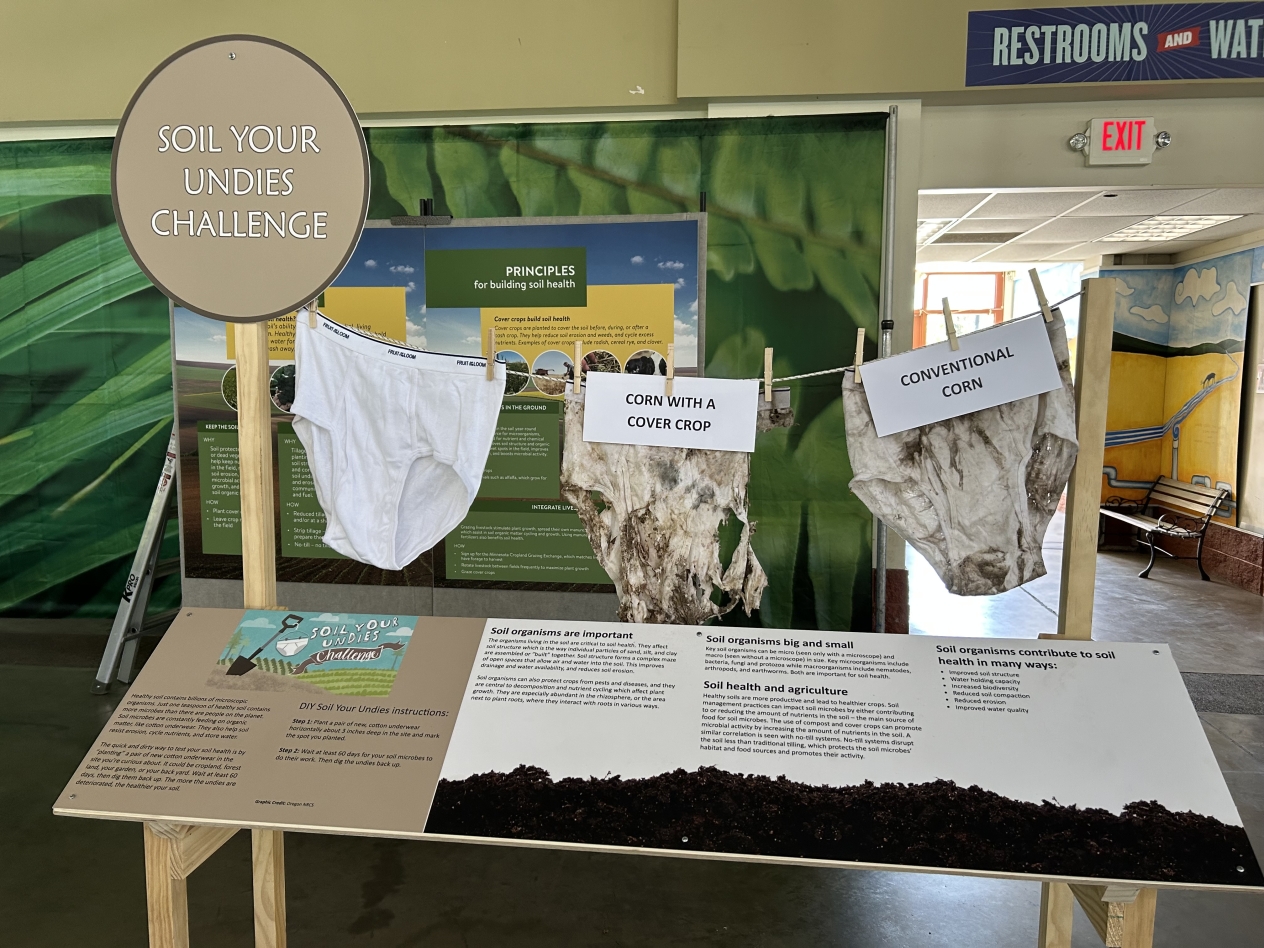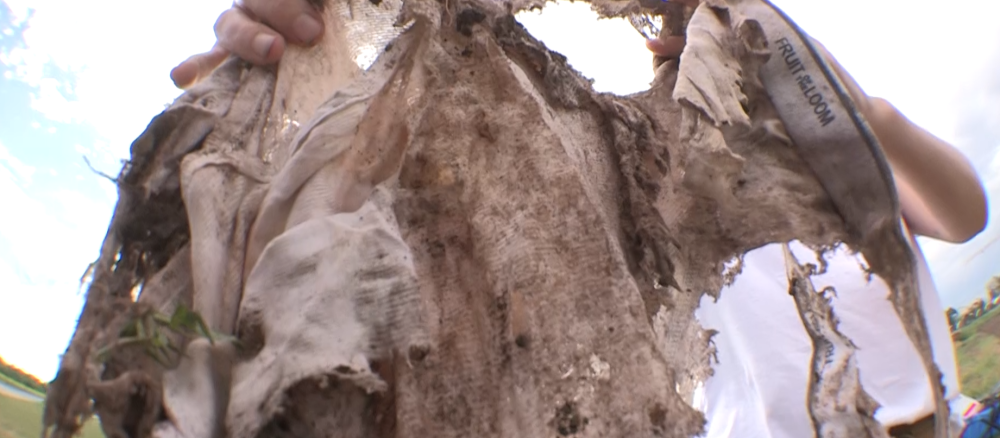How farmers burying briefs in their back forty can help them improve soil and the environment
It takes a lot to stand out at the Minnesota State Fair. Amid the flashing lights, the carnival barkers, the free keychains, and the mouth-watering aromas of stick-borne foods, Jen Schaust tried to draw people in with dirty, tattered underwear.
“They’re eye-catching,” she says with a laugh, “and funny.”
And, as it turns out, they’re highly effective at demonstrating the importance of soil health and how the microorganisms living under our feet influence everything from crop yields to erosion control to climate change.
The notion to display some tighty whiteys at this year’s Eco Experience exhibit might have come from Schaust, an environmental outreach coordinator with the Minnesota Department of Agriculture (MDA), and her colleagues. However, the idea to use cotton briefs to test soil health cropped up several years ago in the soil science community and has spread across the country and even to Canada, France, and Switzerland.

The U.S. Department of Agriculture (USDA) promotes it as the Soil Your Undies Challenge, in which farmers nationwide are encouraged to bury underwear a few inches under the surface in May or June and then, 60 days later, dig it up. “The more the underwear is deteriorated, the healthier your soil,” according to the USDA.
“I wouldn’t say it’s a tool that soil scientists use — there’s no international standard of underwear degradation,” Schaust says. “Rather it’s an educational tool for a lot of people, including farmers. The main reason we use undies is because they’re made out of cotton, so they’re a good source of organic material.”
The MDA has, for the last couple of years, planted underpants at the University of Minnesota’s crop research fields in Saint Paul. One bunch of undies goes in the ground amid rows of conventionally grown corn while another goes in with corn supplemented by cover crops.
The difference in degradation between the two is clear, Schaust says, with more undie-munching microorganisms and macroorganisms, including bacteria, fungi, and earthworms, present in the soil with cover crops. With more organisms growing in the soil around living roots, the soil can better hold on to water during droughts, withstand erosion, provide nutrients for plants living in the soil, and store carbon.
While the USDA and the MDA typically target farmers with the Soil Your Undies Challenge and similar programs, Schaust says the lessons learned from these dingy drawers apply to any gardener, homeowner, landscaper, or lawncare professional.
“The key is organic material and creating microorganism activity,” she says. “In general, you want living roots in your soil and the less disturbance of your soil the better.”
In practice, that means low- to no-till practices, planting cover crops, crop rotation, and adding mulch, compost, or soil amendments with soil-based biodiversity in mind. Schaust also pointed to initiatives like the Minnesota Board of Water and Soil Resources’ Lawns to Legumes program, which encourages homeowners to place pollinator-friendly native plants in residential lawns, as a way to provide habitat for pollinators and to improve local soil health.
Jeff Stuhr, who runs Eco Experience for the Minnesota Pollution Control Agency, says the Soil Your Undies exhibit is a perfect example of how Eco Experience encourages visitors to “adopt a lifestyle that conserves and preserves our natural resources and community well-being. It's a unique and eye-catching way to educate fair-goers about how important soil health is for protecting and improving the environment and human health.”
Schaust says that some Eco Experience visitors might have been grossed out by the exhibit, but others were fascinated.
“The majority of them really never thought about soil, and this exhibit gives them a moment to think about how the things we do on the surface make a big difference from a water quality and from a climate change perspective.”

